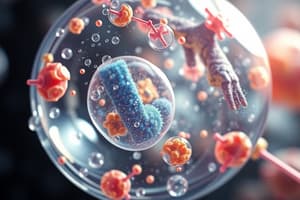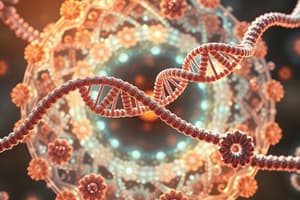Podcast
Questions and Answers
What is the main difference between primary and secondary active transport?
What is the main difference between primary and secondary active transport?
- The presence of a transport protein
- The concentration gradient of the solute
- The type of energy used (correct)
- The direction of transport
Which type of active transport directly uses ATP energy?
Which type of active transport directly uses ATP energy?
- Passive transport
- Secondary active transport
- Facilitated diffusion
- Primary active transport (correct)
What is the role of ATP in primary active transport?
What is the role of ATP in primary active transport?
- To regulate the concentration gradient of the solute
- To break down the solute into smaller molecules
- To provide energy for the transport of molecules (correct)
- To synthesize transport proteins
What is the purpose of secondary active transport?
What is the purpose of secondary active transport?
What type of transport is used to transport molecules against their concentration gradient?
What type of transport is used to transport molecules against their concentration gradient?
Flashcards are hidden until you start studying
Study Notes
Active Transport
- The main difference between primary and secondary active transport is the direct use of ATP energy: primary active transport directly uses ATP energy, whereas secondary active transport uses the energy generated by the primary active transport.
Primary Active Transport
- Primary active transport directly uses ATP energy to transport molecules across cell membranes.
Role of ATP
- ATP plays a crucial role in primary active transport, providing the energy required to transport molecules against their concentration gradient.
Secondary Active Transport
- Secondary active transport uses the energy generated by primary active transport to transport molecules across cell membranes.
Purpose of Secondary Active Transport
- The purpose of secondary active transport is to transport molecules across cell membranes, often using the energy generated by primary active transport.
Transport Against Concentration Gradient
- Active transport is the type of transport used to transport molecules against their concentration gradient.
Studying That Suits You
Use AI to generate personalized quizzes and flashcards to suit your learning preferences.




